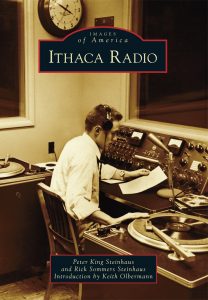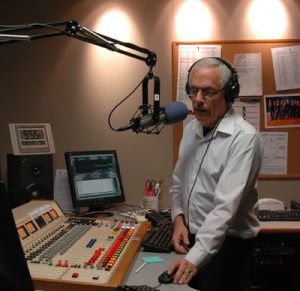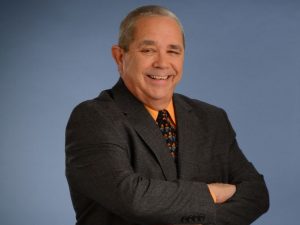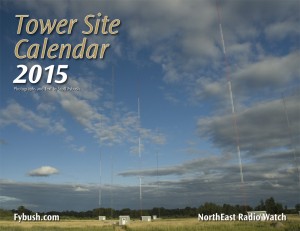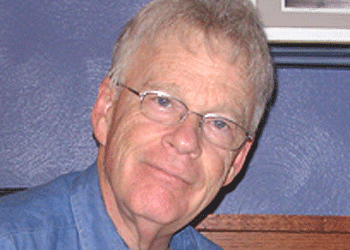In this week’s issue… Inside CBS Radio’s growth plan in Philadelphia – Kevin Metheny, RIP – NYC’s newest TV station hits the air – Remembering a New England TV sports legend – NY morning show changes
By SCOTT FYBUSH
*Barring some very big surprises in the next three months, the CBS Radio-Beasley station swap announced on Thursday is going to go down as one of the biggest radio deals of 2014 anywhere in the country – and almost certainly in Philadelphia, where it will add country WXTU (92.5) and rhythmic top-40 WRDW-FM (96.5) to the CBS cluster that now includes sports WIP-FM (94.1), classic hits WOGL (98.1), all-news KYW (1060) and talk WPHT (1210).
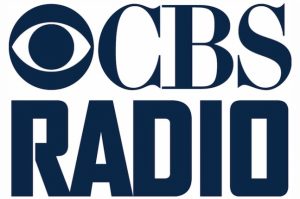 In exchange for the two Philadelphia FMs and its Miami cluster of one AM and two FMs, Beasley will get CBS Radio’s Tampa and Charlotte clusters, plus WIP (610) to add to its existing Philadelphia AM cluster, religious WTMR (800 Camden NJ) and leased-time daytimer WWDB (860).
In exchange for the two Philadelphia FMs and its Miami cluster of one AM and two FMs, Beasley will get CBS Radio’s Tampa and Charlotte clusters, plus WIP (610) to add to its existing Philadelphia AM cluster, religious WTMR (800 Camden NJ) and leased-time daytimer WWDB (860).
Combining the Beasley stations to create a four-FM/two-AM cluster means that CBS becomes the first broadcaster to max out its ownership across FM and TV in all three of the region’s top-10 markets: in Philadelphia, the expanded CBS Radio cluster combines with KYW-TV (CBS) and WPSG-TV (CW) to fill out the company’s portfolio, joining existing maxed-out clusters in New York City (three AMs, four FMs, two TVs) and Boston (one AM, four FM, two TV). Does this look like the behavior of a company that’s trying to exit radio, as certain rumor-mongers would have it? From here, it certainly doesn’t: assuming CBS makes good on its stated intent of divesting more of its medium-market signals to focus more heavily on top-25 radio/TV combos, there aren’t many other existing broadcast companies that would have either the financing or space within the market caps to buy the resulting CBS Radio clusters.
Back here in NERW-land, there are two big sets of questions to answer about what happens next:
In Philadelphia, there’s every reason to believe WXTU’s country format stays intact (and plenty of reasons to think iHeartMedia might make a CBS-owned WXTU the latest target for a country challenge, a la Boston’s “Bull” and Pittsburgh’s “Big 104.7,” probably flipping its WISX 106.1 from hot AC to do so.) But it’s what becomes of WRDW-FM’s “Wired” format that’s more interesting – will it pick up CBS’ “AMP” branding, or will 96.5 become the new FM home for the all-news format of KYW, which has been struggling with slipping ratings this year in a market where AM is rapidly becoming a non-factor? KYW is still the biggest revenue producer in the cluster, and CBS was widely reported to have been an unsuccessful bidder twice over for the 106.9 FM signal (now EMF’s K-Love WKVP) to give KYW a slot on FM; 96.5, with a full class B signal from the Roxborough tower farm, would be a better FM location for KYW than 106.9 ever would have been.
On the AM side, it’s likely Beasley will take the big 610 signal in another direction from its present CBS Sports Radio network feed, essentially a filler since CBS relocated WIP to the FM dial a few years back. Beasley has had some success with leased-time AM in big markets; in addition to its two Philadelphia AMs, it also runs WRCA (1330) in Boston. (Which brings up the issue of callsigns: we’d expect CBS to keep exclusive use of the WIP calls on FM, which means the AM signal will get its first new calls since it signed on way back in 1922. Will CBS move the historic WBCN and WHFS calls, now parked on AMs in Charlotte and Tampa, rather than hand them off to Beasley? We’ll know more when the sale documents are filed.) As for the remaining two AMs in the CBS fold, it’s hard to imagine much changing – KYW isn’t going to move from 1060 right away even if it adds an FM sister, and talker WPHT on 1210 is likely more profitable for the company than the CBS sports on 610.
And what of CBS Radio’s other markets in the region? The company long ago shed the smaller clusters in Buffalo and Rochester that it picked up as part of its acquisition of American Radio Systems. New York and Boston are, as noted above, key parts of the company’s current strategy. That leaves Pittsburgh, which at #26 falls just outside the new top-25 focus at CBS – but which fits neatly into a few other pieces of core CBS strategy, what with a strong radio-TV combination, sports play-by-play and a big heritage AM in the form of KDKA. Down at market #52, Hartford is one of the last remnants of ARS still in the CBS Radio family, and that cluster of WTIC (1080) and three FMs has been widely rumored to be for sale for years. There’s clearly interest in general from potential buyers in Hartford, as witnessed by the recent sales of the smaller Marlin and Buckley clusters; it’s clear that even if CBS still wants to sell Hartford, it’s holding out for something more than a fire-sale price.
(Our content partner, RadioInsight, examined the rest of CBS Radio’s markets around the country to find some more likely candidates for additional swaps and divestitures outside of NERW-land.)
 NERW Live! We always enjoy meeting up with NERW readers (and future NERW readers), and we have two events coming up this week that you might enjoy. On Wednesday, October 8, it’s the SBE 22 Expo, the big annual broadcast engineering show held at the Turning Stone Casino & Resort in Verona, between Utica and Syracuse. This year’s Expo is also the SBE’s 50th Anniversary national convention, which makes it even more special.
NERW Live! We always enjoy meeting up with NERW readers (and future NERW readers), and we have two events coming up this week that you might enjoy. On Wednesday, October 8, it’s the SBE 22 Expo, the big annual broadcast engineering show held at the Turning Stone Casino & Resort in Verona, between Utica and Syracuse. This year’s Expo is also the SBE’s 50th Anniversary national convention, which makes it even more special.
And then on Thursday, October 9, we’re excited to be hosting a book signing and meet-up with Peter King, the CBS Radio News correspondent and upstate radio veteran who’s just co-authored “Ithaca Radio,” the new book from Arcadia Publishing. In addition to several events in Ithaca, Peter will be here in Rochester from 11:30 AM-1:30 PM to sign books and talk radio at Bill Gray’s, 1650 Penfield Road (corner of Panorama Trail). We hope you can join us!
(And if you can’t make it, we have copies of Peter’s book, our new Tower Site Calendar 2015, and lots of other goodies, too, over at the Fybush.com Store!)
Peter and I will also be appearing Tuesday, October 8 on “Connections” on WXXI (1370)/WRUR (88.5) in Rochester and WEOS (89.5) in the Finger Lakes; we’ll post a link to the audio when it’s available.
[private]
*The newest TV station in the New York City market is on the air, even as a battle continues to play out behind the scenes that will determine where it will eventually appear for cable and over-the-air viewers.
 NERW readers have been following along for more than four years now as Bob McAllen’s PMCM, LLC has fought to move KVNV (Channel 3) from Ely, Nevada to Middletown Township, NEW JERSEY – and as of Thursday night (October 2) at 6 PM, that move is complete. After building out a new transmitter site atop 4 Times Square in Manhattan, the relocated KVNV signed on with MeTV programming and a new set of calls: WJLP, named for PMCM principal Jules L. Plangere, Jr.
NERW readers have been following along for more than four years now as Bob McAllen’s PMCM, LLC has fought to move KVNV (Channel 3) from Ely, Nevada to Middletown Township, NEW JERSEY – and as of Thursday night (October 2) at 6 PM, that move is complete. After building out a new transmitter site atop 4 Times Square in Manhattan, the relocated KVNV signed on with MeTV programming and a new set of calls: WJLP, named for PMCM principal Jules L. Plangere, Jr.
For now, the new WJLP is still fighting to call itself “Channel 3.” While it signed on with “3.10” as its virtual channel, the FCC is still taking comments on a rulemaking proceeding that will determine what virtual channel it will be permanently authorized to use, and thus what channel it can assert on area cable systems through must-carry. PMCM is hoping to make the use of 3.10 (and eventually 3.11 and 3.12 as additional subchannels) a permanent compromise to satisfy Hartford’s WFSB, also on virtual channel 3. KVNV/WJLP has already agreed to let WFSB keep its channel 3 position on Cablevision’s Fairfield County systems in Connecticut, but it faces additional challenges in its bid to get on channel 3 elsewhere in the New York cable market: ion’s WPXN (Channel 31) has occupied channel 3 on many area systems for years, and it’s fighting to keep from being bumped from that prime slot between WNBC and WCBS.
The FCC’s rulemaking process still has some time left to run, and cable systems won’t be compelled to add WJLP under must-carry until 90 days after an order is finalized, so it’s unlikely the new “MeTV 3” will make it to cable – on any slot at all – in most of the market until sometime in early 2015, barring some sort of settlement among the parties.
*Kevin Metheny was one of radio’s more colorful personalities over a long career that took him from coast to coast – and yes, that included four years (1980-1984) as PD at New York’s WNBC (660), where he had the challenge of supervising Howard Stern, who went on to make Metheny famous as “Pig Virus,” which morphed into Paul Giamatti’s memorable portrayal of “Pig Vomit” in the movie “Private Parts.”
But Metheny was much more than just that caricature. A second-generation programmer, he was the son of Terrell Metheny, whose own career included time at the helm of New York’s WMCA in the late 1960s. Kevin Metheny started his own career in radio at the age of 16, and by the late 1970s he was consulting WIBG (990) in Philadelphia and then programming WXKX (KX 96) in Pittsburgh on the way to stops in Chicago and St. Louis before WNBC. After his time sparring with Stern and trying valiantly to keep WNBC relevant in the face of FM competitors), Metheny went on to work for WNBC colleague Bob Pittman at MTV and then to a long career that included executive roles with Jacor, a stint as PD of Chicago’s WGN while former Jacor head Randy Michaels was at the helm there, and most recently time with Cumulus at WJR in Detroit and KGO/KSFO in San Francisco.
Metheny was at work as operations director at KGO when he apparently suffered a heart attack on Friday. He was 60 years old.
*Over at CBS Radio, Jim Douglas is out as half of the “Jim and Kim” morning show on WWFS (Fresh 102.7), exactly five years after CBS moved Douglas and his partner Kim Berk to New York from Long Island’s WKJY (98.3). Berk remains with the station, hosting what’s now “Kim and Cane” in morning drive.
More Radio People on the Move: Sammy Suarez is headed north from his current base in South Carolina to become PD of iHeart’s WPKF (96.1 Poughkeepsie) and WBWZ (93.3 New Paltz). Freed up from PD chores at “Rock 93.3,” operations manager Chris Marino takes over the PD chair and afternoon drive, too, at the recently-rebranded “Q92” (WRNQ 92.1); at “Kiss,” the PD chair had belonged to Terry O’Donnell before he shifted to the Springfield Clear Channel/iHeart cluster earlier this year.
Up at iHeart’s Albany cluster, there’s a translator move in the works that’s part of a bigger national partnership between the former Clear Channel and religious broadcaster EMF. EMF was granted translator W260CH (99.9) back in April 2013, but instead of building out its current CP for 10 watts from the Bald Hill tower site north of Troy, the translator is applying to move to iHeart’s WGY-FM (103.1) site just across the Hudson from downtown Albany. From up there, the 250-watt signal would have decent coverage of the city, fed by a subchannel of iHeart’s WRVE (99.5 Schenectady). Will EMF work with iHeart in Albany, as it’s done in other markets, to put EMF’s K-Love or Air 1 content on that WRVE subchannel to feed the translator? Doing so would extend EMF’s reach beyond its existing Capital District rimshots, K-Love’s WYKV (94.5 Ravena) to the south and Air 1’s WYAI (93.7 Scotia) to the west.
Brian Larson’s Northeast Gospel Network is making moves on three translators this week. In the Hudson Valley, it’s filed for a $10,000 sale of W279AL (103.7 Catskill) to Delaware County Sounds of Life. (On paper, W279AL is listed as a translator of WCKL 560 Catskill, but the Commission is prying pretty deeply into illegal operation of the AM station under Brian Dodge that could cost WCKL its license renewal.)
In the Mohawk Valley, Northeast Gospel has been building a footprint of FM signals that already includes WNGG (90.9 Gloversville) and WVVC (88.1 Dolgeville). Now it’s applied for a license to cover for Utica translator W293CD (106.5), relaying WNGG, as well as to move translator CP W293CC (106.5 Remsen) down the dial to 106.1. The WNGG-based network runs separate programming from Larson’s main service based north of Albany at WNGN (91.9 Argyle).
Up north in Plattsburgh, Randy Michaels’ RadioActive LLC has kept WNMR (107.1 Dannemora) off the air for much of the last two years, but now it’s applying for a power boost. WNMR would go from 1 kW/276′ to 6 kW/325′, moving about 500 feet to a new tower up on Route 374 near the state prison in Dannemora.

Where are they now? Rochester’s own Dave Mason has been in southern California for a long time now, and he’s just returned to his home base of San Diego after spending the past year as assistant PD at CBS Radio’s legendary KRTH (101.1) in Los Angeles. Amidst some changes at K-EARTH, Mason’s now back in middays at XHPRS (Max 105.7), the station he’d departed (in its “Walrus” era) to join KRTH. (Meanwhile, another ex-NERW-land talent is also making a southern California move: John Nolan, who’d been at WEZF in Burlington, VERMONT and then at XHPRS, is taking over afternoons at Salem’s KFSH in suburban Los Angeles – where he replaces former New York-market jock/programmer Rob Wagman. Small world…)
Another “where are they now” chapter finds a former Rochester programmer returning to NERW-land. Dave Symonds left the Entercom cluster here to go to Denver and then to Richmond, Virginia, where he’s been the regional programming manager overseeing several iHeart markets. Now he’s on his way to CONNECTICUT, where he’s taking over from Mike Wheeler as operations manager for iHeart’s Hartford and New Haven clusters. (Wheeler’s on his way home to Detroit to program WJR for Cumulus.) Symonds will also have direct PD responsibility for WWYZ (Country 92.5) and WHCN (105.9 the River).
A call swap in the Hudson Valley: Bud Williamson’s smooth jazz format on WQCD (88.1 Montgomery) and its translators is now getting calls to match, becoming WJZZ; the WQCD calls, in turn, get swapped out with WJZZ’s present home on 90.1 in South Salem on Dennis Jackson’s little jazz signal along the Connecticut state line. (NERW hopes Dennis will use this as the cue to now flip his “WQCD” back to the WVWA-FM calls it once bore in its CP stage…)
We’re still not sure why Juergen Klebe’s Sunrise Broadcasting thought it could buy a translator from Fordham University without disclosing the purchase price to the FCC – but as we’d suspected, the Commission told both parties that they had to reveal how much W233BM (94.5 Beacon) was selling for. The answer turns out to be $75,000, and when the deal closes the translator will shift from a relay of Fordham’s WFUV (90.7 New York) to rebroadcasting oldies WGNY-FM (98.9 Rosendale), via an HD subchannel of sister station WJGK (103.1 Newburgh).
*The bankruptcy sale of the Finger Lakes Radio Group has now been officially filed with the FCC: “Long Point Communications” is the name of the buyer, a partnership of Bruce Danziger (Vox) and Eric Sivertsen, and as we’d previously reported, it’s paying $3.375 million for three full-power FMs, four AMs and five translators that make up most of the radio marketplace along the Thruway corridor between Rochester and Syracuse.
In Corning, the plug has been pulled for now on WCBA (1350). Once the top-rated station in town, WCBA became collateral damage as ownership limits came into play. In recent years, its license has been held by Bill Christian’s Great Radio group even as its day-to-day operations have come from down the street at Paige Christian’s Sound group. Now Great has notified the FCC that the current economy means “it is not possible for the station to cover its operating expenses,” and so it’s taken WCBA off the air for a “temporary period” beginning Sept. 15. (NERW notes that when Great was attempting to buy the Pembrook Pines cluster, and to spin off WCBA, it told the FCC it wasn’t actively selling local airtime on the little Fox Sports affiliate.)
 *In one of its first format moves since becoming iHeartMedia, the former Clear Channel is shaking things up in Williamsport, PENNSYLVANIA with the addition of “Rock 94.9.” W235BA had been a translator of news-talk WRAK (1400 Williamsport), but in what may be another sign of iHeart’s weakening commitment to the aging talk format, WRAK’s former east-side simulcast, WRKK (1200 Hughesport) and the translator have now broken from the WRAK talk simulcast to rock out in competition against Backyard’s WZXR (99.3 South Williamsport). The new translator/AM combo will carry Cleveland-based “Rover’s Morning Glory” in morning drive and “Sixx Sense” at night, and is otherwise fed by iHeart’s Premium Choice service.
*In one of its first format moves since becoming iHeartMedia, the former Clear Channel is shaking things up in Williamsport, PENNSYLVANIA with the addition of “Rock 94.9.” W235BA had been a translator of news-talk WRAK (1400 Williamsport), but in what may be another sign of iHeart’s weakening commitment to the aging talk format, WRAK’s former east-side simulcast, WRKK (1200 Hughesport) and the translator have now broken from the WRAK talk simulcast to rock out in competition against Backyard’s WZXR (99.3 South Williamsport). The new translator/AM combo will carry Cleveland-based “Rover’s Morning Glory” in morning drive and “Sixx Sense” at night, and is otherwise fed by iHeart’s Premium Choice service.
In Harrisburg, iHeart is using an HD subchannel to feed a translator move-in, but not with one of its own formats. Instead, W269AS (101.7) will carry an HD sub from iHeart’s WHKF (99.3) that will in turn carry EMF’s K-Love programming. The Carlisle-licensed translator used to carry Family Radio’s WKDN-FM from the Philadelphia market. It has long operated from the WHP-TV site north of Harrisburg, but it’s now applying to boost power from 20 to 160 watts at that location for better Harrisburg coverage.
In Erie, Family Life Ministries is transferring translator W275BX (102.9, with a pending move to 92.1) to Holy Family Communications for no cash; the translator will relay Holy Family’s WMIH (89.5 Geneva OH).
*In MASSACHUSETTS, the Boston Herald‘s radio offerings have picked up a new affiliate: Carter’s WCRN (830 Worcester) is now carrying “Morning Meeting” from Boston Herald Radio on weekday mornings from 9-noon, replacing the Money Matters programming that has moved down the dial to WTAG (580/94.9).
Right on the heels of last week’s application for an FM move at WCTK (98.1), Hall Communications in New Bedford has also filed its expected application for a site change for sister station WNBH (1340). While WCTK can simply build a new tall tower at one corner of its present site to free up the rest of the property for the construction of a new port for container ships, the AM signal can’t coexist as easily with the big cranes that will be swinging to and fro once the port goes into operation. So with the help of the port’s developers, WNBH is applying to relocate to a new site at 1277 Kempton Street, behind a cemetery, where it will run 1000 watts day and night from a new 199-foot tower.
Over in Fall River, WSAR (1480)’s construction permit to boost daytime power to 25 kW (adding an extra tower for the increase from 5 kW) expired unbuilt last week, but the station has filed for a new CP with the same facilities.
Out on Martha’s Vineyard, the MVPBS group that applied for an LPFM on 105.5 in Vineyard Haven (and then modified the application to 96.7) has been shot down by the FCC, which says MVPBS can’t provide documentation showing that it was a recognized nonprofit entity at the time it filed its application. That leaves only one Vineyard LPFM applicant standing from the 2013 window: the 105.5 Oak Bluffs application from “M&M Community Development,” which filed for multiple low-power signals via individual local “branches.”
*In NEW HAMPSHIRE, WKXL (1450 Concord) will once again own its FM sister, many years after spinning off the former WKXL-FM (102.3, now WWHK). WKXL owner Gordon Humphrey, doing business as New Hampshire Family Radio LLC, is paying $5000 to New Hampshire Gospel Radio for W280EC (103.9). The translator has already been carrying WKXL’s news-talk format.
Up in Northwood, New Hampshire Community Radio applies to move its proposed LPFM from 94.9 to 94.7.
 *When the MAINE Association of Broadcasters held its convention just over a week ago, one of the most emotional moments was the Hall of Fame induction of veteran Portland sports anchor Bruce Glasier. With his health failing from lung cancer, Glasier wasn’t able to make it to the ceremony (his son Paul accepted on his behalf), but he was at least aware of his big honor in the days before his death late Wednesday at age 69.
*When the MAINE Association of Broadcasters held its convention just over a week ago, one of the most emotional moments was the Hall of Fame induction of veteran Portland sports anchor Bruce Glasier. With his health failing from lung cancer, Glasier wasn’t able to make it to the ceremony (his son Paul accepted on his behalf), but he was at least aware of his big honor in the days before his death late Wednesday at age 69.
Glasier joined NBC affiliate WCSH (Channel 6) back in 1977 and spent 35 years working there and for “News Center” sister station WLBZ (Channel 2) in Bangor before retiring in 2012. Along the way, he became the face of local sports in southern Maine, anchoring WCSH/WLBZ coverage of professional, college and especially high school sports for decades. Glasier also served as a mentor to a generation of broadcasters, and he’ll be deeply missed.
Even as the WCSH crew mourns Glasier, they’re welcoming back another familiar face. Meteorologist Todd Gutner left in 2007 to go to work at WBZ-TV (Channel 4) in Boston, but he returns to WCSH next week to take over weekday morning weather duties.
*Up in Fort Kent, Catholic radio is now on the air at WFHP-LP (97.5), which filed for its license to cover last week. The station belongs to the Fort Kent Knights of Columbus.
*Most of our news from CANADA this week comes from the CBC and ICI/Radio-Canada, which were granted two new FM signals across the region. In Baie-Saint-Paul, northeast of Quebec City on the north shore of the St. Lawrence, a new signal on 104.9 will relay CBV (106.3 Quebec City) with ICI’s Premiere Chaine network. CBV-9 will run 833 watts average/3597 watts max DA/-127.1 m.
Across the line in Ontario, CBLI (1110 Deep River), which relays CBC Radio 1’s CBO (91.5 Ottawa), has been granted a move to FM, on 97.9 with 50 watts/9.77 m.
In the Maritimes, Acadia Broadcasting’s CJHK (100.7 Bridgewater NS) has dropped its “Hank FM” nickname for the blander “Country 100.7.”
And in Montreal, the always-insightful Steve Faguy looked into the CRTC’s grant of extra time for the Tietolman-Tetreault-Pancholy group’s new AMs on 600 and 940, and he reports that while Pancholy has moved from Canada to India, his partners still hope to have those signals on the air in “six to nine months.”
[/private]
SPRING IS HERE…

And if you don’t have your Tower Site Calendar, now’s the time!
If you’ve been waiting for the price to come down, it’s now 30 percent off!
This year’s cover is a beauty — the 100,000-watt transmitter of the Voice Of America in Marathon, right in the heart of the Florida Keys. Both the towers and the landscape are gorgeous.
And did you see? Tower Site of the Week is back, featuring this VOA site as it faces an uncertain future.
Other months feature some of our favorite images from years past, including some Canadian stations and several stations celebrating their centennials (buy the calendar to find out which ones!).
We still have a few of our own calendars left – as well as a handful of Radio Historian Calendars – and we are still shipping regularly.
The proceeds from the calendar help sustain the reporting that we do on the broadcast industry here at Fybush Media, so your purchases matter a lot to us here – and if that matters to you, now’s the time to show that support with an order of the Tower Site Calendar. (And we have the Broadcast Historian’s Calendar for 2025, too. Why not order both?)
Visit the Fybush Media Store and place your order now for the new calendar, get a great discount on previous calendars, and check out our selection of books and videos, too!
Prime ad space that’s easy on the eyes
 More than half a million impressions from one calendar? How is that possible?
More than half a million impressions from one calendar? How is that possible?
Here’s how an ad in our calendar has better exposure than one in a magazine:
1. Magazines issues are designed to be looked at for a period of weeks or months. Calendars are designed to be looked at for a whole year.
2. Magazines are read or glanced at, then placed in a drawer or in a pile. Calendars are hung on a wall.
3. Magazines usually don’t get read more than once. Calendars are looked at between four and eight times each day. (Promotional Products Association International; Advertising Specialty Institute)
Plus, people don’t usually walk into someone’s office, pick up a magazine and start to read it. But they do walk into someone’s office and see a calendar hanging there.
Let’s do the math: four impressions or views a day (conservatively), five days in a work week (at minimum), 260 work days per year. That’s just over 1,000 impressions per year. We sell around 600 calendars each year. That’s 600,000 total impressions for the year!
A 4-by-1-inch banner ad on each month’s page costs only $2,500. That’s less than one penny for each impression your ad makes on a broadcast-industry professional.
The Tower Site Calendar has become THE prestige print product of the broadcast industry. Since 2002 it has become a must-have for engineers and engineering managers in stations big and small, all over North America.
Give us your layout and we’ll give you the exposure.
We’re ready to work with you! Call us at 585-442-5411 between 9 a.m. and 9 p.m. ET, or email lisa@fybush.com.
From the NERW Archives
Yup, we’ve been doing this a long time now, and so we’re digging back into the vaults for a look at what NERW was covering one, five, ten, fifteen and – where available – twenty years ago this week, or thereabouts.
Note that the column appeared on an erratic schedule in its earliest years as “New England Radio Watch,” and didn’t go to a regular weekly schedule until 1997.
One Year Ago: October 7, 2013
In just a few short months, this column will celebrate its twentieth anniversary. A lot has changed in those twenty years: we’ve expanded our coverage beyond New England, we’re not distributed via Usenet anymore, your editor no longer has a full head of hair- but one thing has remained constant: 51 weeks a year, one of the first things we do when we sit down to assemble this report for you is to peruse the FCC’s Daily Digests (and more recently, its entire CDBS database system) to tease out the latest news of proposed station sales, technical upgrades, silent STAs and so much more.
 This week is different. With a government shutdown having reduced the FCC to the thinnest of skeleton staffs – three commissioners and a handful of security and IT people – there’s nothing happening at the Portals. This week is different. With a government shutdown having reduced the FCC to the thinnest of skeleton staffs – three commissioners and a handful of security and IT people – there’s nothing happening at the Portals.
In the short term, at least where the FCC is concerned, the shutdown is little more than a blip; after all, the reason we only hit the FCC filings 51 weeks each year is that on the 52nd week, between Christmas and New Year’s Day, the FCC already shuts down.
Live, local overnight talk radio is a rarity in 2013. Away from the sports-talk arena, there’s nobody at all offering live talk overnight in New York City or Philadelphia, for instance.
In MASSACHUSETTS, CBS Radio’s WBZ (1030 Boston) has long kept the all-night talk torch burning with the help of big talents such as Larry Glick, Bob Raleigh, Norm Nathan and Steve LeVeille. But the latest name to join that illustrious list didn’t last long: last week, WBZ fired Jen Brien after just three months on the job.
Brien had been a somewhat controversial choice from the beginning: she came to WBZ after a stretch as a more political talker across town at WRKO (680), and while she followed the unwritten WBZ dictate that the overnight shift isn’t a time for talking about hard topics, she drew an immediate and often negative reaction from listeners uncomfortable with the often very personal, confessional tone she took on her WBZ show.
In her absence, “WBZ Overnight” goes back to where it had been before LeVeille’s retirement, with Bradley Jay and Morgan White Jr. rotating host duties while the station again looks for a permanent replacement. (The very good news here is that it appears the shift will stay local.)
*The sands are shifting in CONNECTICUT, too: veteran jock Jerry Kristafer is off the air at Buckley classic hits WDRC-FM (102.9 Hartford), five years into his current stint there. Kristafer’s history with WDRC goes way back: he spent 15 years there earlier in his career, amidst gigs in New Jersey and at WELI (960 New Haven). Kristafer’s co-hosts Mike Stevens and Kim Zachary are doing mornings without him for now, while WDRC figures out a long-term plan for morning drive.
Five Years Ago: October 5, 2009
One of the best-loved radio voices in eastern PENNSYLVANIA has died. “Diamond” Jim Nettleton began his broadcast career in Pottstown, then got his big breaks in Connecticut – in Waterbury, New Haven (WAVZ), and most of all in Hartford, where he did afternoons at WDRC in the mid-sixties. He quickly moved south to Philadelphia’s WFIL (560), where he was the “Boss Jock” holding down afternoon drive during one of the decade’s most prominent top-40 radio wars, which pitted WFIL against “Wibbage,” WIBG (990). Nettleton moved on to overnights at New York’s WABC in 1969, but he continued to be heard in Philadelphia via voicetracks for WCAU-FM (98.1). In 1971, WABC dismissed Nettleton due to the perceived conflict with his work for CBS-owned WCAU-FM, at which point Nettleton went across tow to WPIX-FM.
Later in the seventies, Nettleton programmed WCAU-FM and WUSL (98.9, in its “US-1” era before flipping to R&B), then returned for a short stint at WFIL before moving to Tampa’s WDAE in 1983. The nineties found Nettleton back home in Philadelphia, working afternoons on WOGL (98.1) and later on WPEN (950), as well as voice-tracking for Maryland’s WARX and most recently for the revived WIBG-FM (94.3 Avalon) at the Jersey shore. Nettleton was diagnosed with cancer in early September, and word of his serious illness was making the rounds of the Philadelphia radio community early last week. He died Sunday, at age 69.
On the other end of the Keystone State, Pittsburghers will learn more later today about an ambitious effort to restore an urban station to their market in the wake of the sale and silencing of WAMO-FM (106.7), WAMO (860) and WPGR (1510) to a Catholic broadcast group that has yet to return those signals to the air. Eddie Edwards, who built WPTT (Channel 22, now WPMY) into one of the nation’s biggest African-American-owned stations before selling it, buying it back, and then LMA’ing it to Sinclair and again selling it, was an outspoken opponent of the WAMO sale – and he’s planned a 4 PM news conference today to announce that he’s acquired a radio station that will flip to urban programming. Is Edwards buying one of the former Sheridan stations from St. Joseph Missions – perhaps WAMO(AM)? That seems more likely than a big-ticket purchase of an FM signal, especially since those signals are all in the hands of cluster owners (Steel City, Renda, CBS and Clear Channel) that we’d think would be unlikely to part with an individual station.
Thursday night will bring one of the biggest transitions in years to the NEW YORK CITY radio dial, and we now know more about what’s in store for classical WQXR in its new home as a noncommercial signal at 105.9 on the dial. Contrary to earlier reports, it turns out that new owner WNYC will hire several on-air staffers from QXR’s current incarnation at 96.3. Morning host Jeff Spurgeon, afternoon host Elliott Forrest and evening host Midge Woolsey will make the move over to the WNYC studios for daytime shifts on the new 105.9 signal (with current WQXR midday host Annie Bergen conspicuously absent), while WNYC’s own classical hosts, Terrance McKnight and David Garland, will handle WQXR’s evening shifts. WNYC has also hired announcer Naomi Lewin from WGUC in Cincinnati.
As for the music on the new WQXR, the Times reports that WNYC has adopted a mission statement for the new service that calls for a relatively mainstream classical playlist: “There may indeed be times when the more radical and unfamiliar pieces work, but we will not favor them over the work that speaks directly to the needs of uplift, beauty and contemplation.” For the more esoteric material sometimes heard on the classical portion of the present WNYC-FM (93.9) broadcast day, there will be a new streaming audio service called “Q2.” It’s not yet clear whether Q2 will show up as an HD Radio subchannel on either WNYC-FM or the new WQXR – or for that matter whether WQXR will appear as a subchannel on the bigger WNYC-FM signal.
Up north, the end of the line for AM radio in Sudbury, Ontario came without fanfare last Wednesday afternoon around 5, when Newcap turned off the transmitter at CIGM (790) after eight decades. The AM station had been simulcasting its new FM replacement, “Hot 93.5” (CIGM-FM), for the last few weeks. The new station launched its jock lineup in late September, bringing Matt Sampaio from sister station CHNO-FM (Big Daddy 103.9) and Sherri K. from CHTN-FM (Ocean 100.3) in Prince Edward Island together in the “Morning Hot Tub.” They’re followed by Ryan Seacrest in middays (yes, even in Sudbury, Ontario) – and he’s followed by Grant Kellett, late of CIHT (Hot 89.9) in Ottawa in afternoons and Jess Stevens, formerly of PEI’s CKQK (105.5), at night.
One more AM signal quietly faded into oblivion last week: CKRU (980 Peterborough) ran out of its 90-day simulcast period with CKRU-FM (100.5), leaving the air after more than 60 years – and leaving Peterborough, too, without AM radio.
Ten Years Ago: October 4, 2004
There are legends, and then there are Legends. Scott Muni was a capital-L, bold-face Legend, and his death Tuesday night (Sept. 28) leaves NEW YORK radio a much poorer place.
Muni, born Donald Allen Munoz in Wichita, came to New York from WAKR in Akron in 1959 to become one of the “Good Guys” at WMCA (570). The next year, he moved to WABC (770), where he worked evenings right through the station’s glory days, the start of Beatlemania. It would be the start of a long relationship for Muni. In 1966, Muni took a bold step, relocating to the radio hinterlands of the FM dial, where he joined the initial airstaff at WOR-FM (98.7), the city’s pioneering progressive rock station. Muni thrived on the freeform programming at WOR-FM, which gave him the freedom he’d never had in the tight confines of WABC’s top-40 format, and his gravelly voice became inseparable from rock radio in New York.
Muni moved to WNEW-FM (102.7) in 1968, and quickly became an iconic part of the station “Where Rock Lives.” It was Muni who helped New Yorkers through their grief when John Lennon was killed, and every show he ever did after that featured at least one Beatles or Lennon tune. When WNEW’s rock era came to a close, Muni moved over to WAXQ (104.3) in 1998, where he was heard during the noon hour each day – at least until this past January, when he suffered a stroke. Muni’s family and friends kept the extent of his illness quiet, and so it came as a shock to most when the news came of his death. Scott Muni was 74.
In other news from the Empire State this week, Ernie Anastos is moving up the TV dial in New York City. He’ll be released from his contract at WCBS-TV (Channel 2) later this year to go over to Fox’s WNYW (Channel 5), where he’ll replace Len Cannon at the anchor desk at 5, 6 and 10.
The news in New England is all about Air America this week – and we’ll start in MASSACHUSETTS, where Clear Channel made the rumors come true, flipping WXKS (1430 Everett) and WKOX (1200 Framingham) to a progressive (liberal, if you prefer) talk lineup that includes Air America’s Randi Rhodes and Al Franken and Jones’ Ed Schultz and Stephanie Miller. The new format replaces standards on WXKS (where we hear some tears were shed as morning man Bill Wightman said farewell to his audience last week) and Spanish religion on WKOX.
Speaking of WKOX, or at least of one of its towermates, WBIX (1060 Natick) finally began using its nighttime broadcast authority last week. WBIX continues to operate by day with 40 kW from the WKOX facility in Framingham, but now it’s on the way to 2500 watts of night power from the WAMG (890 Dedham) site in Ashland. For the moment, it’s running significantly less than 2500 watts as it tunes up its signal and attempts to avoid interfering with KYW (1060 Philadelphia) and Boston’s own WBZ; those with long memories may recall that WBIX’s ancestor on 1060, WGTR, operated under special temporary authority from the Ashland site for decades while it tried – and failed – to get the array working well enough to get a license to cover.
Fifteen Years Ago: October 2, 1999
[There was no NERW this week, as we were in the process of moving to a new NERW Central.]
Twenty Years Ago: October 2, 1994
WCGY (93.7 Lawrence) is making a very slow evolution, apparently to an adult-
progressive “Generation X” type format, in competition with WFNX. To recap: Live programming ended at midnight, Monday night/Tuesday morning, with “Carry That Weight” by the Beatles. Dead air followed for 90 minutes, then half an hour or so of new sister station WBMX-98.5 simulcast, with the IDs clumsily potted down. Then more dead air for 4 hours, then an automated format kicking in at 6 am.
The automation has run the show since then…and the music mix seems to be slowly moving from the straight ahead classics/current AOR mix of the “old” WCGY to a more progressive format. The only IDs have been “93 (beep) 7 WCGY”, although one legal I heard followed that with “Is there anyone listening out there?” There’s still a spot load, and they’re even promoting a (live?!?!?) remote tomorrow at a new McDonalds!
Interesting to see where this is headed…perhaps this is all a ruse, and there’s a real new format under wraps waiting to be sprung on us all? |


